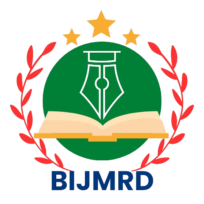Author: Tapas kumar Manna & Dr.Vijendra Mishra
DOI Link :: https://doi.org/10.70798/Bijmrd/02010014
Abstract: E-learning pattern is associated with the development and positive interpretation of academic credentials through developing learning specific subjects at a convenient pace of timing. The e-learning pattern is the way of accumulating its priority and support with teaching preference in India due to the rapid growth of the technological adoption rate. E-learning in higher education is associated with several sets of advantages starting with “transcends geographical boundaries’ ‘ and the benefit of information retention. The present study is an attempt to find out the students views on the influence of e-learning on the traditional classroom. It also measures the difference of e-learning attitude on the basis of gender and residential area. In this present study the population consists of the higher education students namely studying in different colleges (govt. Aided and self finance) of Paschim Medinipur districts of west bengal. Out of the population a sample 480 students including male (230) and female (250) were selected randomly for the purpose of the study. Test of e learning related attitude- it is a structured questionnaire consisting of 36 items with the response of strongly disagree, disagree, agree and strongly disagree. Cronbach’s alpha, which expresses how much each scale item measures the same underlying characteristic, was used to calculate the scale’s reliability (Cronbach, 1951; Pallant, 2010; Bryman & Cramer, 2011). A Cronbach alpha score of 0.877 was attained. In the present study both the inferential statistics and the differential statistics have been used for data analysis. It has been found out in the study that majority of the students agree that the concept of elearning is influencing the traditional classroom.
Keywords: E-Learning, Higher Education, Educational Institutions. Co-Curricular Activities.
Page No: 76-80
